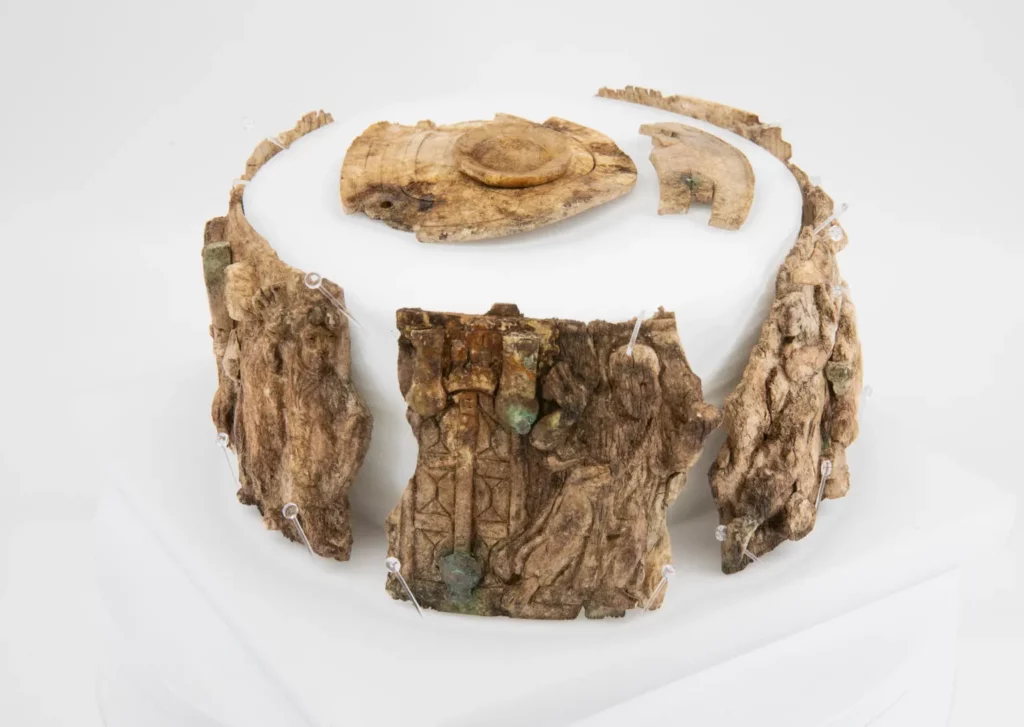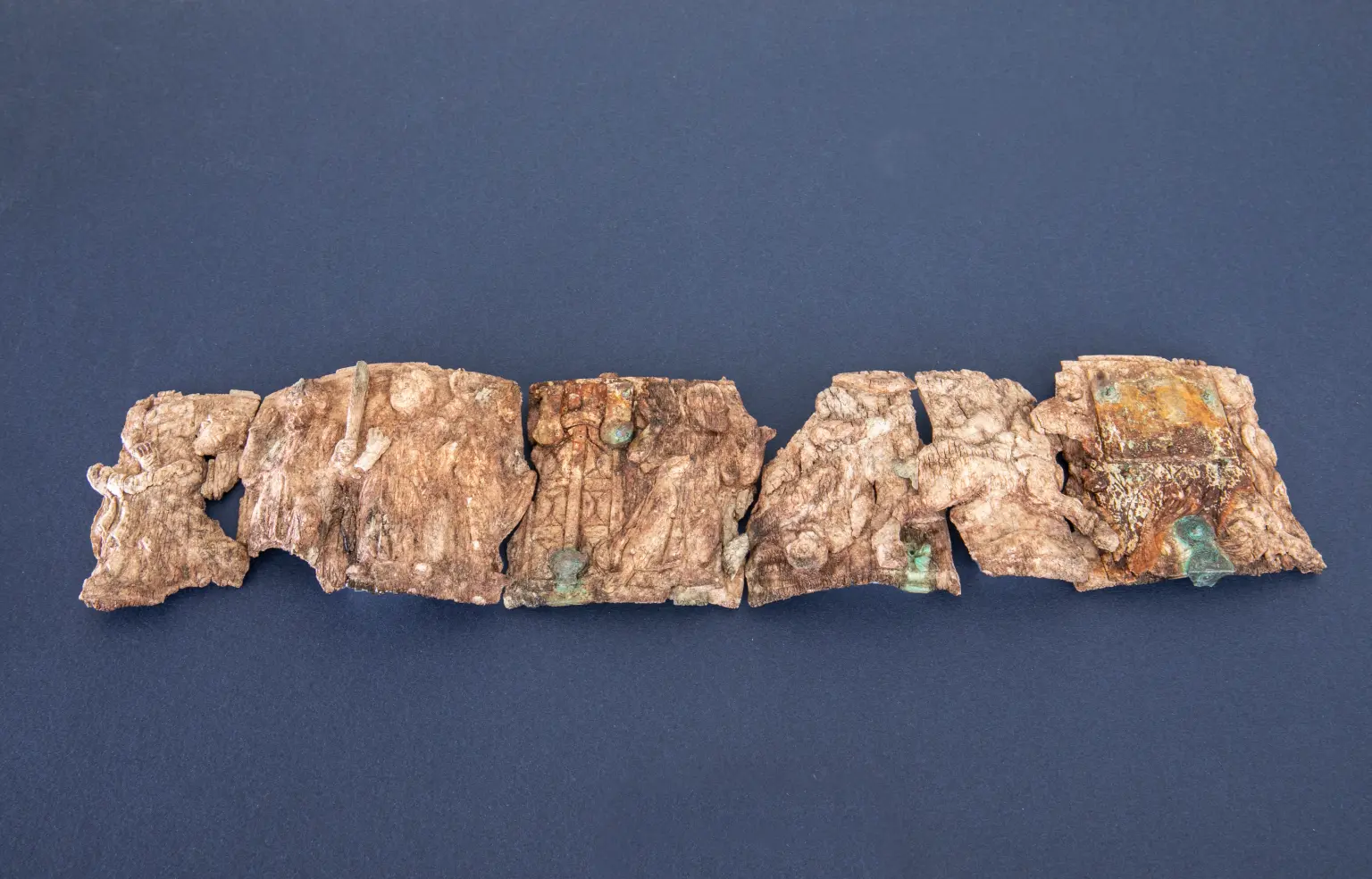Archaeologists from Innsbruck University, led by Gerald Grabherr, were excavating a previously unknown church at the summit of Burgbichl in Irschen when they uncovered a shrine containing a richly decorated ivory reliquary box, believed to be 1,500 years old. The marble shrine, measuring around 20 by 30 centimeters, was hidden under the altar in the side chapel area. The shrine contained a heavily fragmented ivory pyx decorated with Christian motifs, depicting Moses receiving the Ten Commandments and Jesus’s ascension.

Researchers are conducting further investigations into the origins of the findings.University of Innsbruck
At one end, the pyx shows a figure at the foot of a mountain – the man depicted is turning his gaze away and a hand rising out of the sky above him, placing something between the person’s arms. “This is the typical depiction of the handing over of the laws to Moses on Mount Sinai, the beginning of the covenant between God and man from the Old Testament,” says Gerald Grabherr. This is followed by depictions of biblical figures. At the end, you can see a man on a chariot with two horses harnessed to it – and here, too, a hand coming out of the clouds pulls this figure up into heaven. “We assume that this is a depiction of the ascension of Christ, the fulfillment of the covenant with God. The depiction of scenes from the Old Testament and their connection with scenes from the New Testament is typical of late antiquity and thus fits in with our pyx; however, the depiction of the Ascension of Christ with a so-called biga, a two-horse chariot, is very special and previously unknown.”

Since 2016, archaeologists from the University of Innsbruck have been carrying out excavations in Irschen, which is a part of the Carinthian Drava Valley.University of Innsbruck
The box is a reliquary usually taken away as the “holiest” part when a church is abandoned. In this case, however, it was left behind. It is the first such pyx found in Austria’s archaeological context.
“We know of around 40 ivory boxes of this kind worldwide and, as far as I know, the last time one of these was found during excavations was around 100 years ago – the few pyxes that exist are either preserved in cathedral treasures or exhibited in museums,” explains the finder, Gerald Grabherr.
The archaeologists assumed that the remains of a saint – i.e. a relic in the classic sense of the word – were originally found in the marble box.
“The pyx was presumably also seen as sacred and was treated as such because it was in contact with a relic. The archaeological and art-historical significance of the pyx cannot be denied,” emphasized Gerald Grabherr.
“Ivory, especially ivory stored on the ground like in the marble shrine, absorbs moisture from its surroundings and is very soft and easily damaged in this state. In addition, uncontrolled drying out can lead to shrinkage and cracks and thus to damage that can no longer be repaired,” says Ulrike Töchterle, head of the restoration workshop in Innsbruck.
The larger parts are deformed, which is why the pyx can no longer be restored to its original state – however, the researchers are working on a 3D reconstruction.
“Due to the very high humidity of 90 per cent in the marble shrine immediately after salvage, the risk of condensation and mold formation was very high, and the contents could not be allowed to dry out too quickly,” Töchterle said. “This meant we had to ensure a very careful and prolonged drying process.”
Archaeologists have excavated in Irschen, a part of the Carinthian Drava Valley, since 2016, when the discovery was first made in August 2022.




